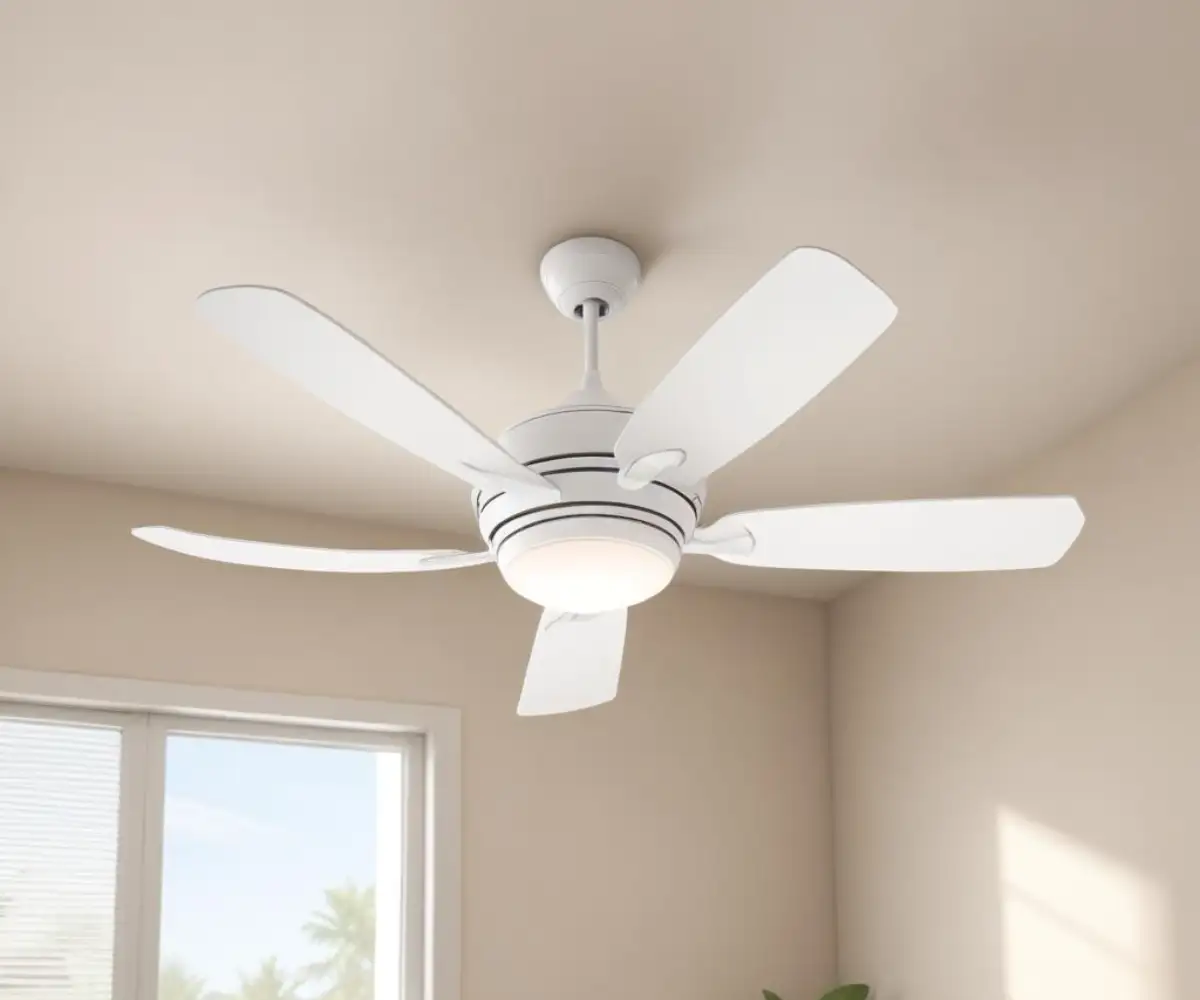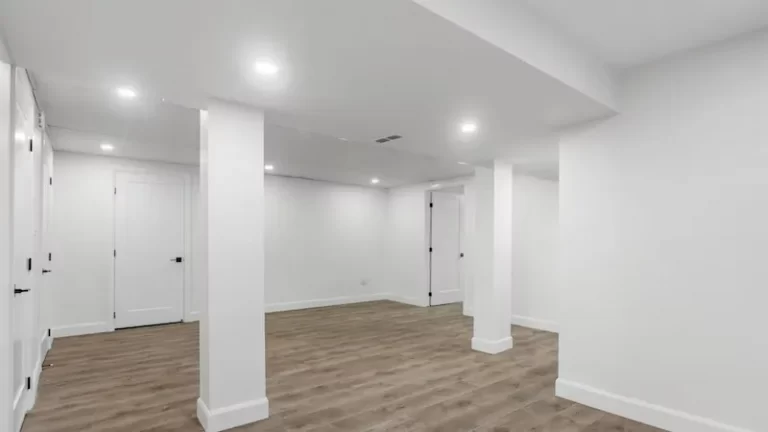Ceiling Fan for 8ft Ceiling? Avoid These Critical Mistakes!
That standard eight-foot ceiling in your home presents a classic design dilemma. You want the comfort and efficiency of a ceiling fan, but the low height creates worries about safety, cramped aesthetics, and proper airflow. A poorly chosen fan can make a room feel smaller and even pose a safety hazard.
Choosing the wrong fan is more than an inconvenience; it’s a mistake that can ruin a room’s comfort and look. Many homeowners install fans that hang too low, creating a constant, low-grade anxiety for taller individuals. This guide illuminates the path to selecting and installing the perfect ceiling fan, ensuring your 8ft ceiling becomes a feature, not a limitation.
You'll Learn About
Why Your 8ft Ceiling Demands a Special Kind of Fan
The primary concern with an 8-foot ceiling is safety clearance. Building codes generally mandate that the blades of a ceiling fan must be at least seven feet from the floor. With only 12 inches of clearance to work with, a standard fan that uses a downrod is almost immediately out of the question.
Beyond safety, there’s the matter of proportion and airflow. A bulky fan that hangs too low can visually shrink the room, making it feel crowded and oppressive. Furthermore, a fan positioned too close to the ceiling may struggle to circulate air effectively, defeating its very purpose.
The Golden Rule: Understanding Flush Mount vs. Hugger Fans
For low ceilings, the solution lies in a specific category of fans designed to minimize vertical space. These are known as flush mount or “hugger” ceiling fans. These terms are often used interchangeably to describe a fan that mounts directly to the ceiling’s electrical box without a downrod.
This design is the cornerstone of a successful installation in a room with an 8-foot ceiling. By eliminating the downrod, these fans “hug” the ceiling, maximizing the distance between the blades and the floor. This ensures you meet safety codes while maintaining a sense of openness in the room.

Decoding Ceiling Fan Size for a Low Ceiling Room
While height is the first hurdle, the fan’s diameter, or blade span, is equally important for optimal performance. A fan that is too small for a room will struggle to move air, while one that’s too large can create an unpleasant, vortex-like effect. The key is to match the blade span to your room’s square footage.
Choosing the correct size ensures efficient, quiet air circulation that cools the entire space evenly. Refer to this table as a general guide for selecting the right fan diameter for your room.
| Room Size (Square Feet) | Recommended Fan Diameter (Inches) | Typical Room Type |
|---|---|---|
| Up to 75 sq. ft. | 29-36 inches | Bathroom, Laundry Room, Hallway |
| 76 to 144 sq. ft. | 36-42 inches | Small Bedroom, Home Office |
| 145 to 225 sq. ft. | 44-52 inches | Master Bedroom, Kitchen, Living Room |
| 225 to 400 sq. ft. | 52-56 inches | Large Living Room, Great Room |
Beyond Blades: Critical Features You Can’t Ignore
The best ceiling fan for your 8-foot ceiling involves more than just its dimensions. Modern fans come with a variety of features that can enhance performance, efficiency, and convenience. Paying attention to these details will ensure you get a fan you love for years to come.
The Motor Makes a Difference: AC vs. DC
A fan’s motor is its heart, and you generally have two choices: AC (alternating current) and DC (direct current). While traditional AC motors are reliable, DC motors offer significant advantages for low-ceiling applications. DC motors are often more compact, allowing for sleeker, lower-profile fan designs.
They are also whisper-quiet and more energy-efficient, often providing more speed options than their AC counterparts. This combination of a smaller housing and quiet operation makes a DC motor fan an excellent, albeit sometimes more expensive, choice for bedrooms and other quiet spaces.
Lighting That Preserves Headroom
Many flush mount fans come with integrated light kits. For an 8-foot ceiling, it’s crucial that the lighting fixture is as low-profile as the fan itself. Look for fans with modern, flat LED light panels or enclosed, dome-style lights that do not add significant depth to the fixture.
These integrated designs provide necessary illumination without compromising the precious inches of headroom you need to maintain. They offer a clean, seamless look that complements the space-saving nature of a hugger fan.
Installation Secrets for a Flawless Finish
Proper installation is paramount for safety and performance. Even the best fan will underperform or become a hazard if not installed correctly. One of the most critical first steps is to ensure your ceiling’s electrical box is fan-rated, as a standard light fixture box is not designed to support the weight and vibration of a fan. You must be sure you are using the correct screws for your ceiling fan box to guarantee a secure attachment.
During installation, pay close attention to the canopy, the decorative cover that hides the wiring. Sometimes, even with a hugger fan, achieving a snug fit can be tricky. If you ever need to make adjustments, knowing how to remove a screwless ceiling fan canopy can be a valuable skill. Finally, ensure all components are tightened securely to prevent annoying sounds or a dangerous wobble in the fan’s ball joint.
The Hidden Science: Airflow Dynamics and Building Codes
The 7-foot blade-to-floor clearance is not just a recommendation; it is a standard set by the National Electrical Code (NEC) for safety. Adhering to this rule is non-negotiable. However, airflow performance is more nuanced and often overlooked in typical guides.
The effectiveness of a fan is measured in CFM (Cubic Feet per Minute). Contrary to popular belief, a hugger fan does not inherently mean weaker airflow. High-quality low-profile fans use blade pitch and motor power to generate substantial airflow. The blades act as airfoils, and a steeper pitch (12-14 degrees) can move air more efficiently, creating a comfortable breeze without needing a large drop from the ceiling.
Do Low-Profile Fans Compromise on Power?
A common myth is that flush mount fans are inherently less powerful than their downrod-mounted cousins. While it’s true that the proximity to the ceiling can slightly restrict airflow intake, modern engineering has largely compensated for this. Look for the CFM rating when comparing fans.
A well-designed hugger fan with a high CFM rating can outperform a poorly designed standard fan. The key is to invest in a quality model with a powerful motor and aerodynamically efficient blades.
What About Sloped 8ft Ceilings?
This is a tricky situation. Most flush mount fans are designed exclusively for flat ceilings and cannot be installed on a slope. Attempting to do so is unsafe and will void the warranty.
For a sloped 8-foot ceiling, you must seek out a fan that is specifically rated for angled mounting and use the shortest possible downrod included. This requires meticulous measurement to ensure the blades will clear the lowest point of the ceiling slope while still maintaining the 7-foot floor clearance.
Frequently Asked Questions
What is the best type of ceiling fan for an 8ft ceiling?
For an 8-foot ceiling, a flush mount or “hugger” style fan is generally recommended. These fans mount directly against the ceiling, maximizing headroom and ensuring safety. While most standard fans can be installed on 8-foot ceilings, low-profile designs are specifically made for this height to provide optimal clearance.
What size ceiling fan do I need for a room with an 8ft ceiling?
The fan’s blade span should be determined by the room’s square footage, not the ceiling height. For small rooms up to 100 square feet, a fan with a 29 to 36-inch blade span is suitable. For larger rooms up to 400 square feet, a fan between 36 and 50 inches would be appropriate.
How much clearance is required between the fan blades and the floor?
For safety and optimal performance, ceiling fan blades should be at least 7 feet above the floor. With an 8-foot ceiling, a low-profile or flush mount fan helps to meet this requirement. This clearance ensures that even tall individuals can walk safely underneath the fan.
Can I use a ceiling fan with a downrod on an 8ft ceiling?
While flush mount fans are often preferred, some standard fans with a short downrod (typically 3-6 inches) can be used on an 8-foot ceiling. It is crucial to ensure that with the downrod, the fan blades are still at least 7 feet from the floor. Always check the fan’s specifications to confirm its suitability for your ceiling height.
Are flush mount ceiling fans as effective at moving air?
Flush mount fans can be very effective, especially in rooms with lower ceilings. Because the blades are closer to the ceiling, they may not move as much air as a fan with a downrod. However, in a room with an 8-foot ceiling, their design provides sufficient airflow while maintaining necessary headroom.
Do I need a special fan for a sloped 8ft ceiling?
Yes, if your 8-foot ceiling is sloped or angled, you will likely need a fan that comes with a sloped ceiling adapter or canopy. This hardware allows the fan to hang level and operate safely. Many standard ceiling fans include a dual-mount canopy for this purpose, but it’s important to verify this before purchasing.
Conclusion: Your Perfect Fan for a Perfect Room
Choosing a ceiling fan for an 8-foot ceiling doesn’t have to be a compromise. By prioritizing a flush mount or hugger design, you immediately solve the most significant safety and clearance challenges. From there, it’s about matching the fan’s diameter to your room’s size for optimal airflow.
Don’t overlook the advanced features that make a real difference in daily use, such as a quiet and efficient DC motor or a sleek, integrated LED light. With the right knowledge, you can select a fan that not only cools your space effectively but also enhances its style and comfort without making the room feel small.


